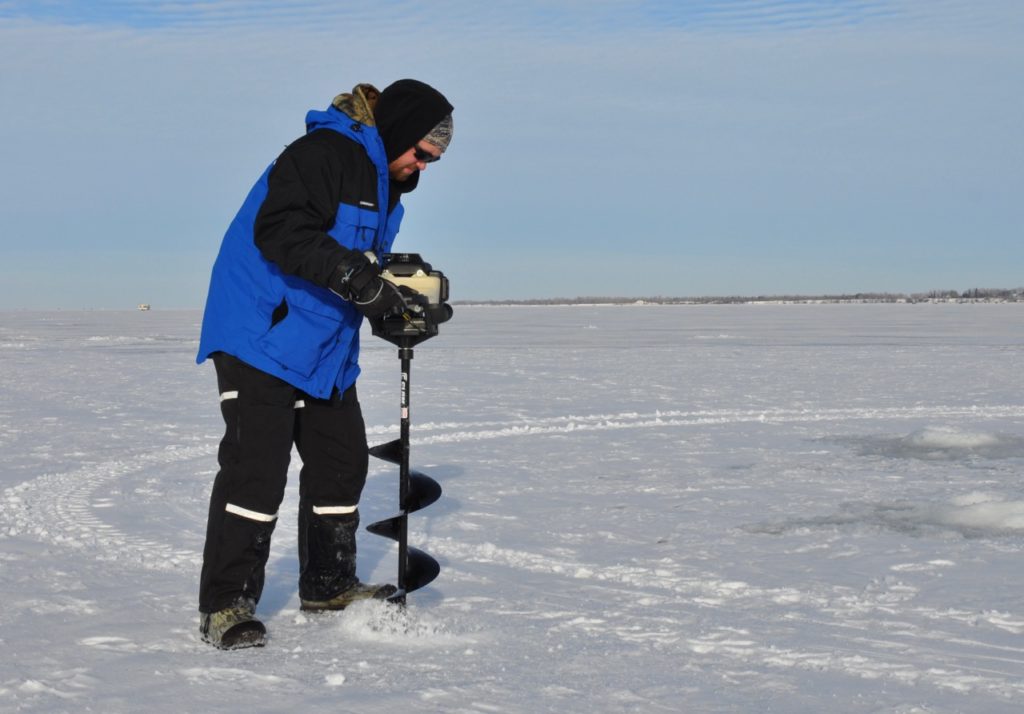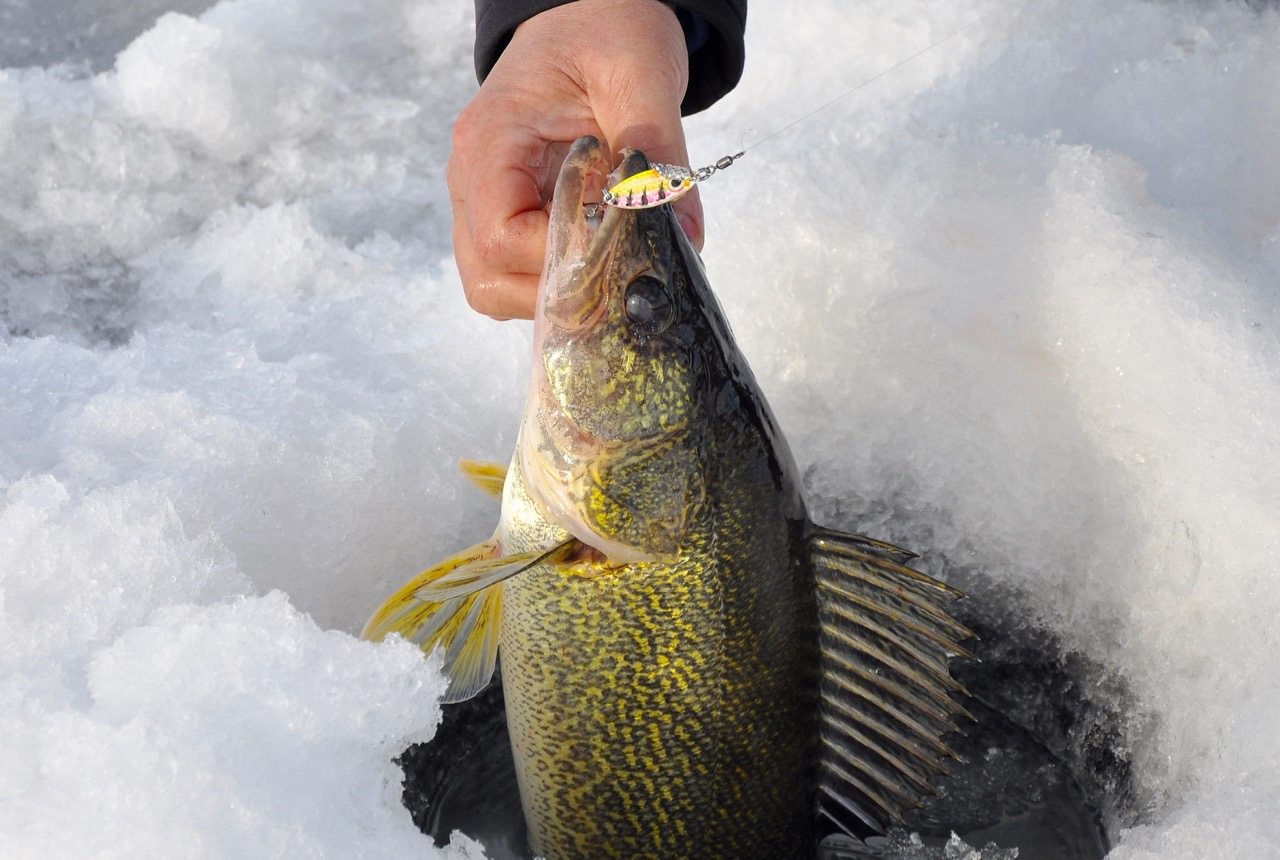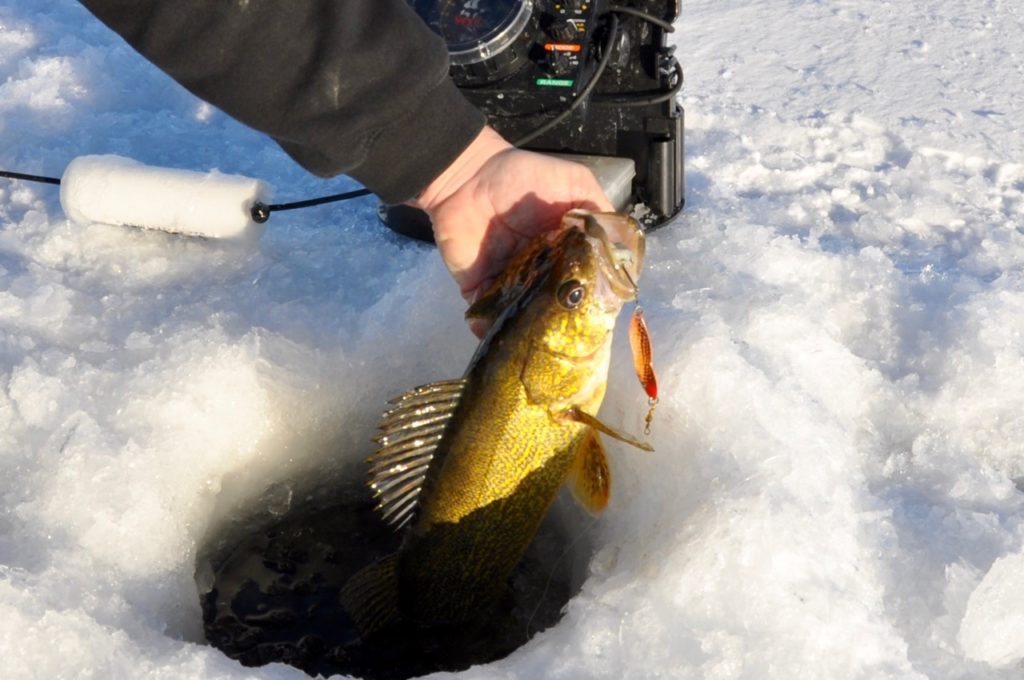Follow the feeders
To catch winter walleye through the ice, you need to stay mobile
Advertisement
PREPARING
Once you understand how walleye move during the day, the key to running and gunning is to drill a series of holes ahead of time well before the fish start moving. Otherwise, if the feeding sessions are short, you risk missing out on the action as you take time to drill holes. You also risk scaring away the fish by punching holes as they move into the area.
Advertisement
When fishing the morning pattern, it’s essential to get your holes drilled well before daybreak. That way, you’ll be able to move with the fish as they travel into the shallows to feed, then follow them back into deeper water afterwards. When fishing the late-day pattern, it’s best to arrive mid-afternoon, and have all your holes drilled at least an hour before sunset. Again, this lets you follow the fish from deeper to shallower water.

By the time the walleye (and the anglers pursuing them) reach the shallows in the evening, it’s usually dark. That leaves you well positioned to safely get off the ice and head for home, which is what I typically do. If you wanted to stay out later, however, I’m quite confident you could follow the fish back out to the deeper water, just as you can in the morning.
Don’t be shy when drilling holes. Walleye can cover a large area as they roam around feeding, so having plenty of holes at the ready gives you more chance to connect with fish. I prefer to drill holes four to five feet apart, in a single, straight line from deep to shallow water. If I’m fishing with others, I’ll drill a line for each angler, running parallel about six feet apart. That way, we can fish at different depths as we search for the walleye, or all fish at the same depth after we’ve found a school.
Advertisement


